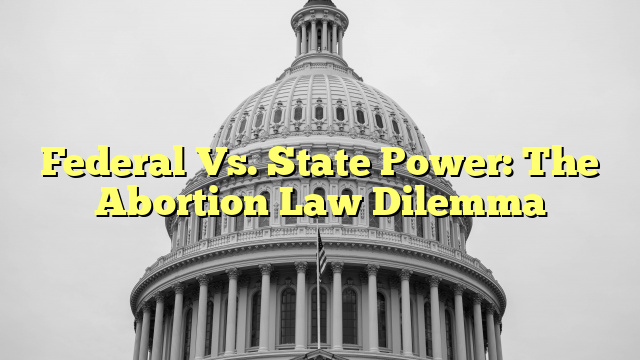Table of Contents
Who has the power to regulate abortion laws?
The power to regulate abortion laws in the United States is a complex issue that involves both federal and state governments. The Constitution does not explicitly grant the federal government the authority to regulate abortion, which means that the power to regulate abortion laws is left to the states.
However, the Supreme Court’s landmark decision in Roe v. Wade in 1973 established a woman’s constitutional right to have an abortion. This decision effectively limited the power of the states to regulate abortion, as any state law that unduly burdens a woman’s right to choose is considered unconstitutional.
While the federal government does not have the explicit power to regulate abortion laws, it does have the ability to pass legislation that affects access to abortion. For example, the federal government can restrict funding for abortion services or impose regulations on abortion providers.
What is the constitutional right to reproductive freedom?
The constitutional right to reproductive freedom is the right of individuals to make decisions about their reproductive health without government interference. This right is based on the concept of personal autonomy and privacy, which are protected under the Due Process Clause of the Fourteenth Amendment.
In the landmark case of Roe v. Wade, the Supreme Court recognized that a woman’s decision to have an abortion is a fundamental right protected by the Constitution. This right to reproductive freedom includes the right to choose whether to have an abortion, as well as the right to access safe and legal abortion services.
However, the right to reproductive freedom is not absolute. The government has the authority to regulate abortion to protect the health and safety of women, but any regulations must be reasonable and not unduly burden a woman’s right to choose.
What does the 5th Amendment say about abortion?
The Fifth Amendment to the United States Constitution does not specifically mention abortion. However, it includes the Due Process Clause, which has been interpreted by the Supreme Court to protect a woman’s right to have an abortion.
In the landmark case of Roe v. Wade, the Supreme Court held that the Due Process Clause of the Fifth Amendment, as well as the Fourteenth Amendment, protects a woman’s right to choose to have an abortion. The Court found that this right is based on the constitutional right to privacy.
While the Fifth Amendment does not explicitly mention abortion, the Supreme Court’s interpretation of the Due Process Clause has established that the government cannot unduly burden a woman’s right to choose to have an abortion.
When did abortion become legal in Canada?
In Canada, abortion was decriminalized in 1988 with the Supreme Court’s decision in the case of R. v. Morgentaler. Before this decision, abortion was regulated under the Criminal Code, which made it a criminal offense except in cases where the life of the mother was at risk.
The Supreme Court’s decision in Morgentaler struck down the existing laws on abortion, ruling that they violated a woman’s right to security of the person under Section 7 of the Canadian Charter of Rights and Freedoms. This decision effectively legalized abortion in Canada and removed the criminal penalties associated with it.
Since the Morgentaler decision, abortion has been considered a medical procedure and is regulated under provincial health care systems. Each province has its own laws and regulations regarding access to abortion services, but the procedure itself is legal and available throughout Canada.

